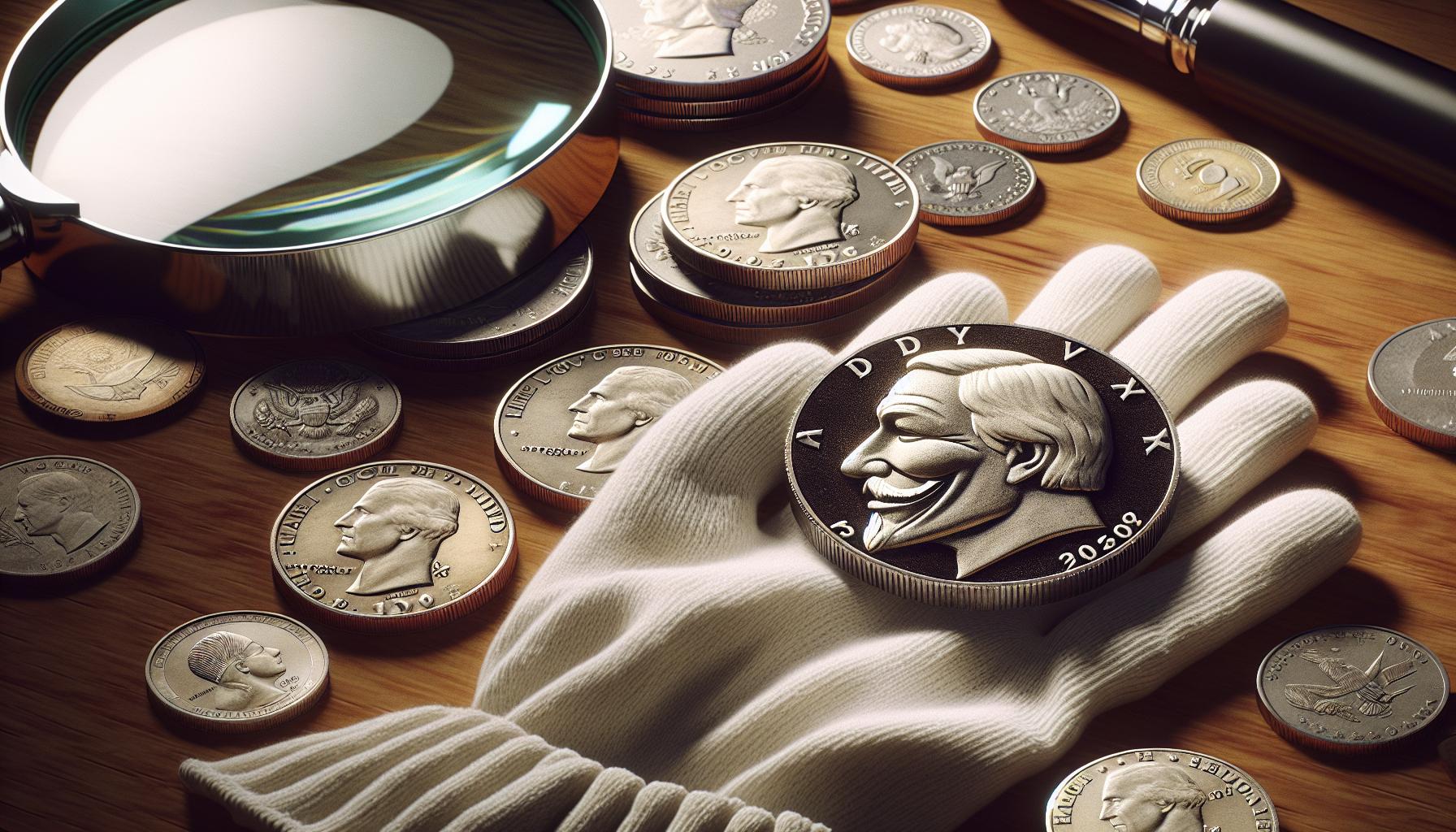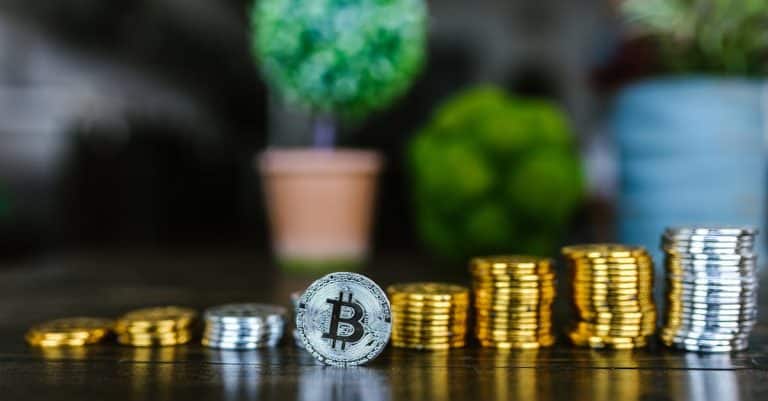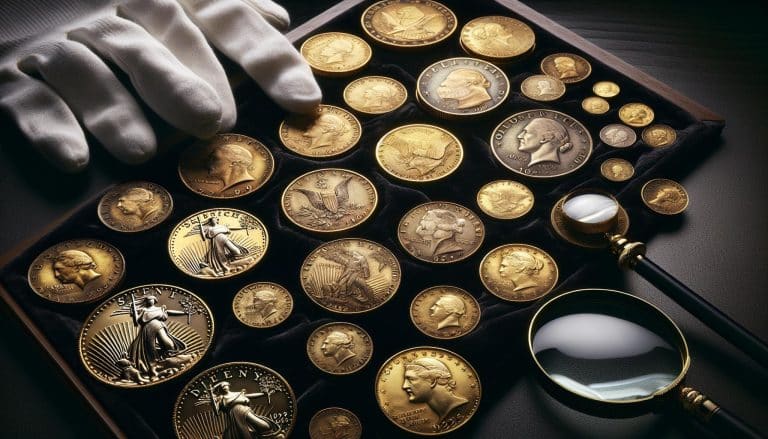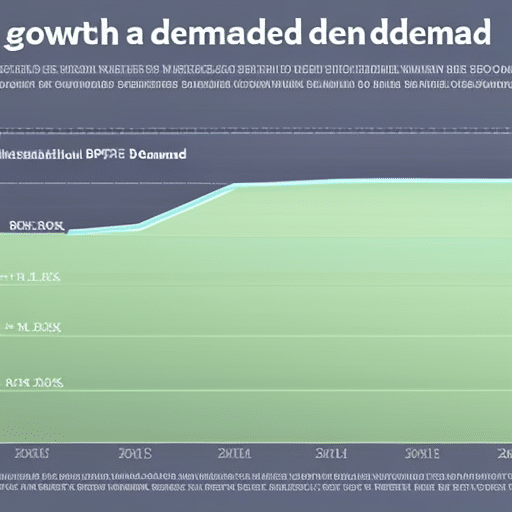Half Dollar Value: Hidden Treasures in Your Pocket Change
Have you ever stumbled upon a half dollar coin and wondered about its value? These unique pieces of currency, once common in everyday transactions, now spark curiosity among collectors and casual observers alike.
While half dollars may not be as prevalent in circulation as they once were, they continue to captivate numismatists and history enthusiasts. From the iconic Kennedy half dollar to rare and valuable specimens, these coins often hold more than just their face value. But how do you determine if your half dollar is worth more than 50 cents?
In this article, we’ll explore the fascinating world of half dollar coins, their potential worth, and the factors that influence their value. You’ll discover how to identify valuable specimens and learn about the rich history behind these intriguing pieces of American currency.
Key Takeaways
- Half dollars can be worth more than their 50-cent face value, especially older or rare specimens.
- Factors influencing half dollar value include age, rarity, condition, mint marks, and silver content.
- Pre-1965 half dollars contain 90% silver, making them valuable for their precious metal content.
- Key dates and rare varieties, such as the 1796 Draped Bust half dollar, can be worth thousands or even millions of dollars.
- Modern Kennedy half dollars (post-1970) are generally less valuable, but some may have numismatic value due to errors or special issues.
- Collectors can sell valuable half dollars through online marketplaces, coin dealers, shows, or specialized auction houses.
Understanding Half Dollars: A Brief History
Half dollars have been a part of American coinage since 1794, playing a significant role in the nation’s currency system. These 50-cent pieces have undergone numerous design changes and fluctuations in popularity throughout their existence.
The first half dollar, known as the Flowing Hair design, was minted from 1794 to 1795. It featured Lady Liberty with flowing hair on the obverse and an eagle on the reverse. Subsequent designs included the Draped Bust (1796-1807), Capped Bust (1807-1839), and Seated Liberty (1839-1891) half dollars.
In 1892, the Barber half dollar was introduced, featuring a classical design by Charles E. Barber. This design remained in circulation until 1915 when it was replaced by the Walking Liberty half dollar, created by Adolph A. Weinman. The Walking Liberty design, highly regarded for its aesthetic appeal, continued until 1947.
The Franklin half dollar, introduced in 1948, depicted Benjamin Franklin on the obverse and the Liberty Bell on the reverse. This design was short-lived, as it was replaced in 1964 by the Kennedy half dollar following the assassination of President John F. Kennedy.
The Kennedy half dollar remains in production today, though its circulation has significantly decreased since the 1970s. The coin’s composition has changed over time, transitioning from 90% silver to 40% silver, and finally to a copper-nickel clad composition in 1971.
While half dollars are still legal tender, they’re rarely seen in everyday transactions. Their limited circulation has transformed them from common currency to items of interest for collectors and numismatists, with some specimens holding significant historical and monetary value.
The Face Value of Half Dollars

Half dollars have a face value of 50 cents, or $0.50. This denomination remains unchanged since the coin’s introduction in 1794. Despite their limited circulation in modern times, half dollars retain their full face value and are legal tender for all debts, public charges, taxes, and dues.
The U.S. Mint continues to produce half dollars, primarily for collectors. These coins are available through the Mint’s numismatic programs and can be ordered directly from their website. While banks don’t typically stock half dollars for general circulation, you can request them from your local bank branch.
It’s important to note that the face value of half dollars doesn’t always reflect their true worth. Many half dollars, especially older or rare specimens, are worth significantly more than their 50-cent face value to collectors. Factors such as mintage year, condition, and historical significance can greatly influence a half dollar’s value beyond its face value.
For example:
- A common, circulated Kennedy half dollar from recent years is typically worth its face value of 50 cents.
- A well-preserved Walking Liberty half dollar from the early 20th century could be worth several dollars or more.
- Rare specimens, like certain 1796 Draped Bust half dollars, can command prices in the tens or hundreds of thousands of dollars at auction.
While half dollars are worth their face value in everyday transactions, their potential numismatic value makes them an intriguing subject for coin collectors and investors alike.
Factors That Influence Half Dollar Value
The value of half dollars extends beyond their face value of 50 cents. Several key factors determine their worth in the collector’s market and to numismatists.
Age and Rarity
Age and rarity significantly impact half dollar value. Older coins, particularly those from the 18th and 19th centuries, are often more valuable due to their historical significance. The rarity of a coin is determined by its mintage numbers and survival rate. Half dollars with lower mintage numbers or those that have survived in small quantities are typically more valuable. For example, the 1796 Draped Bust half dollar is extremely rare, with only a few hundred known to exist, making it highly sought after by collectors.
Condition and Mint Marks
The condition of a half dollar plays a crucial role in determining its value. Coins in uncirculated condition, showing no signs of wear, command higher prices than those that have been in circulation. Grading scales, such as the Sheldon Scale, are used to assess a coin’s condition. Mint marks, which indicate where a coin was produced, can also affect value. Certain mint marks are rarer than others, potentially increasing a coin’s worth. For instance, half dollars minted in Carson City (CC) are often more valuable due to the mint’s short operational period.
Silver Content
The silver content in half dollars is a significant factor in their value. Half dollars minted before 1965 contain 90% silver, making them valuable for their precious metal content alone. From 1965 to 1970, half dollars were composed of 40% silver. After 1970, half dollars were made of copper-nickel clad. The silver content in pre-1965 and 1965-1970 half dollars often makes them worth more than their face value, even in poor condition. As silver prices fluctuate, the intrinsic value of these coins changes, affecting their overall worth in the collector’s market.
Most Valuable Half Dollar Coins
Half dollar coins can be highly valuable, with some rare specimens fetching substantial sums. The most sought-after half dollars are prized for their historical significance, rarity, and condition.
Key Dates and Rare Varieties
Key dates and rare varieties of half dollars often command premium prices in the collector’s market. The 1796 Draped Bust half dollar is exceptionally valuable due to its status as the first year of issue and low mintage. Other notable examples include:
- 1838-O Capped Bust: One of the rarest half dollars, with only 20 known specimens
- 1878-S Seated Liberty: A low-mintage coin highly sought after by collectors
- 1892-O Micro O Barber: A rare variety with a smaller-than-usual mint mark
- 1916-D Walking Liberty: Valuable due to its low mintage and high demand
- 1947-S Doubled Die Reverse Franklin: A rare error coin with doubling on the reverse
These coins’ values can range from thousands to millions of dollars, depending on their condition and authenticity.
Silver Half Dollars
Silver half dollars are particularly valuable due to their precious metal content. Pre-1965 half dollars contain 90% silver, making them worth more than their face value. Key silver half dollars include:
- Walking Liberty (1916-1947): Prized for their beautiful design and silver content
- Franklin (1948-1963): The last 90% silver half dollar series before 1965
- Kennedy (1964): The only year of 90% silver content for the Kennedy series
Silver half dollars minted from 1965 to 1970 contain 40% silver and are also valuable. The current market price of silver significantly influences the value of these coins, with some specimens commanding premiums above their melt value due to numismatic interest.
Modern Half Dollars: Are They Worth Anything?
Modern half dollars, minted from 1964 to the present, generally hold less numismatic value than their older counterparts. However, some specimens can still be worth more than their face value, depending on specific factors.
Kennedy Half Dollars (1964-Present)
Kennedy half dollars, introduced in 1964, are the most recent design in the half dollar series. Here’s what you need to know about their potential value:
- Silver Content: 1964 Kennedy half dollars contain 90% silver, making them valuable for their precious metal content.
- 40% Silver Years: From 1965 to 1970, Kennedy halves contained 40% silver, giving them some inherent value above face value.
- Clad Composition: Post-1970 Kennedy halves are made of copper-nickel clad, reducing their intrinsic value.
Factors Affecting Modern Half Dollar Value
Several factors influence the worth of modern half dollars:
- Mint Marks: Coins from certain mints may be rarer and more valuable.
- Condition: Uncirculated or proof coins typically command higher prices.
- Errors: Coins with minting errors can be worth significantly more to collectors.
- Special Issues: Commemorative or limited-edition releases often carry premiums.
Collecting Modern Half Dollars
While most modern half dollars aren’t highly valuable, they’re still popular among collectors:
- Complete Date Sets: Collecting one coin from each year of issue is a common goal.
- Mint Mark Sets: Acquiring coins from different mints for each year can be challenging.
- Proof Sets: These specially minted coins with mirror-like finishes are prized by collectors.
Investment Potential
Modern half dollars generally aren’t considered strong investment vehicles. However, silver content coins and rare specimens can appreciate over time. Always research current market trends and consult reputable coin dealers before making investment decisions.
Where to Sell Valuable Half Dollars
Selling valuable half dollars requires finding the right market and buyers to maximize your profit. Here are some effective platforms and methods to consider:
Online Marketplaces
Online marketplaces offer a wide reach for selling your half dollars:
- eBay: A popular platform for coin collectors with a large user base
- Etsy: Attracts collectors looking for unique and rare coins
- Reddit: Subreddits like r/Coins4Sale cater to coin enthusiasts
When listing on these platforms, provide clear, high-quality images and accurate descriptions of your half dollars.
Coin Dealers and Shops
Local coin dealers and shops offer expert evaluation and immediate payment:
- Coin shops: Provide in-person assessment and often buy coins on the spot
- Pawn shops: May purchase valuable half dollars, though prices might be lower
- Antique stores: Some specialize in coins and may be interested in your collection
Research reputable dealers in your area and compare offers before selling.
Coin Shows and Conventions
Coin shows bring together collectors, dealers, and enthusiasts:
- American Numismatic Association (ANA) shows: Large events with numerous buyers
- Regional coin shows: Smaller scale but still attract serious collectors
- Auction houses: Often present at shows, offering competitive bidding for rare coins
Attend these events to network and find potential buyers for your valuable half dollars.
Online Coin Dealers
Reputable online coin dealers offer convenience and competitive prices:
- APMEX: Specializes in precious metals and rare coins
- Kitco: Deals in bullion and collectible coins
- JM Bullion: Offers fair prices for silver coins and collectibles
Research each dealer’s reputation and compare offers before committing to a sale.
Auction Houses
For extremely rare or valuable half dollars, consider specialized auction houses:
- Heritage Auctions: One of the largest numismatic auction houses
- Stack’s Bowers: Known for handling high-value coin collections
- Great Collections: Offers both online and traditional auctions
These options typically work best for coins with significant numismatic value.
By exploring these various avenues, you’ll increase your chances of finding the right buyer and securing the best price for your valuable half dollars. Remember to research current market values and get multiple appraisals before selling your coins.
Collecting Half Dollars as an Investment
Collecting half dollars can be a potentially lucrative investment strategy. Half dollar coins, particularly those minted before 1971, often contain silver content that adds inherent value beyond their face value. By understanding market trends and rarity factors, you can build a collection that appreciates over time.
Identifying Valuable Half Dollars
To maximize your investment potential, focus on acquiring these key half dollar types:
- Pre-1965 90% silver half dollars
- 1965-1970 40% silver half dollars
- Rare date and mintmark combinations
- Proof and uncirculated specimens
- Error coins and varieties
Building a Diverse Portfolio
Diversify your half dollar collection to spread risk and increase potential returns:
- Acquire coins from different years and mints
- Include both circulated and uncirculated examples
- Seek out special commemorative issues
- Add proofs and silver proof sets
- Consider modern non-silver half dollars for long-term potential
Storage and Preservation
Proper storage is crucial for maintaining coin value:
- Use archival-quality holders or albums
- Store coins in a cool, dry environment
- Avoid handling coins directly; use cotton gloves
- Insure valuable specimens against loss or damage
Monitoring Market Trends
Stay informed about the half dollar market:
- Track silver spot prices regularly
- Subscribe to numismatic publications
- Attend coin shows and auctions
- Join online coin collecting communities
- Consult price guides and grading services
Long-Term Investment Strategy
Approach half dollar collecting as a long-term investment:
- Set a budget for regular acquisitions
- Focus on quality over quantity
- Be patient; allow time for appreciation
- Consider professional grading for valuable coins
- Periodically review and refine your collection
By following these strategies, you can build a half dollar collection that serves as both an enjoyable hobby and a potentially profitable investment. Remember to research thoroughly and consult with experts when making significant purchases or sales.
Conclusion
Half dollars can indeed be worth more than their face value depending on various factors. While not all half dollars are valuable some can fetch significant sums due to their rarity condition or historical significance. Whether you’re a seasoned collector or just starting out exploring the world of half dollars can be both rewarding and potentially profitable. By understanding the key factors that influence their value and adopting smart collecting and selling strategies you can make informed decisions about your half dollar investments. Remember that patience knowledge and a passion for numismatics are your best allies in this fascinating hobby.
Frequently Asked Questions
What makes a half dollar coin valuable?
Several factors contribute to a half dollar’s value, including silver content, mint marks, condition, and rarity. Coins minted before 1965 contain 90% silver, making them inherently valuable. Rare mint marks, exceptional condition, and special issues or errors can significantly increase a coin’s worth. The Kennedy half dollar, introduced in 1964, is particularly sought after by collectors.
Where can I sell my valuable half dollar coins?
You have several options for selling valuable half dollars. Online platforms like eBay, Etsy, and Reddit offer a wide audience. Local coin dealers provide in-person evaluations and immediate sales. For broader market access, consider coin shows, conventions, online dealers, and auction houses. Each option has its pros and cons, so choose based on your specific needs and the value of your coins.
Is collecting half dollars a good investment?
Collecting half dollars can be a profitable investment if approached strategically. Focus on acquiring key types, building a diverse portfolio, and adopting proper storage and preservation techniques. Stay informed about market trends and consider it a long-term investment. While not guaranteed, a well-curated collection of half dollars can potentially appreciate in value over time, offering both financial returns and the enjoyment of numismatics.
How should I store my half dollar collection?
Proper storage is crucial for preserving the value of your half dollar collection. Use archival-quality coin holders or albums to protect against environmental damage. Store your collection in a cool, dry place away from direct sunlight and extreme temperature fluctuations. For valuable coins, consider using air-tight containers with silica gel packets to control humidity. Regular, gentle cleaning and careful handling will help maintain your coins’ condition over time.
What are some key half dollars to look for when collecting?
Some key half dollars to look for include pre-1965 silver coins, particularly the Franklin and Walking Liberty series. The 1964 Kennedy half dollar is highly sought after due to its silver content and historical significance. Look for rare mint marks, such as the 1938-D Walking Liberty or the 1955 Franklin “Bugs Bunny” variety. Proof coins and special commemorative issues can also be valuable additions to your collection.






 Bitcoin
Bitcoin  Ethereum
Ethereum  Tether
Tether  XRP
XRP  USDC
USDC  Wrapped SOL
Wrapped SOL  TRON
TRON  Lido Staked Ether
Lido Staked Ether  Dogecoin
Dogecoin  Figure Heloc
Figure Heloc  Cardano
Cardano  WhiteBIT Coin
WhiteBIT Coin  Bitcoin Cash
Bitcoin Cash  Wrapped stETH
Wrapped stETH  Wrapped Bitcoin
Wrapped Bitcoin  USDS
USDS  Wrapped eETH
Wrapped eETH  Binance Bridged USDT (BNB Smart Chain)
Binance Bridged USDT (BNB Smart Chain)  Chainlink
Chainlink  LEO Token
LEO Token  Zcash
Zcash  Monero
Monero  WETH
WETH  Stellar
Stellar  Coinbase Wrapped BTC
Coinbase Wrapped BTC  Ethena USDe
Ethena USDe  Hyperliquid
Hyperliquid  Litecoin
Litecoin  Canton
Canton  Avalanche
Avalanche  Sui
Sui  Hedera
Hedera  USDT0
USDT0  Dai
Dai  sUSDS
sUSDS  Shiba Inu
Shiba Inu  Toncoin
Toncoin  World Liberty Financial
World Liberty Financial  Uniswap
Uniswap  PayPal USD
PayPal USD  Cronos
Cronos  Ethena Staked USDe
Ethena Staked USDe  USD1
USD1  Mantle
Mantle  Polkadot
Polkadot  Rain
Rain  MemeCore
MemeCore  Bitget Token
Bitget Token